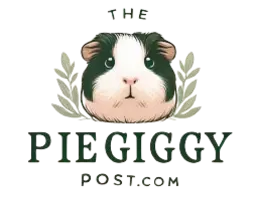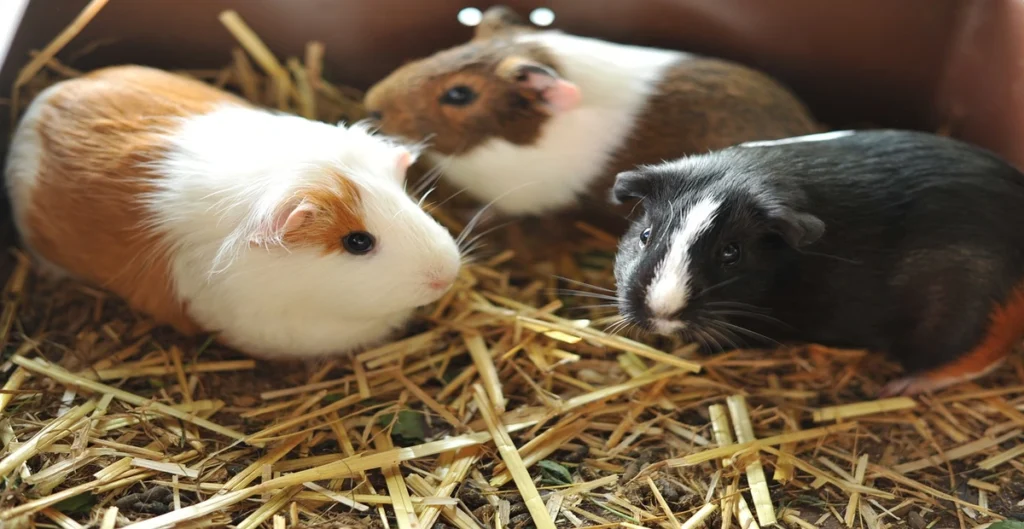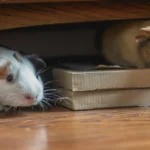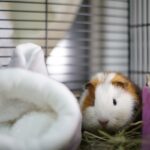Guinea pigs thrive in organized environments where food and water are easily accessible. A DIY guinea pig feeding station and water bottle holder can make mealtime more accessible, more efficient, and less messy. In this detailed guide, we’ll explore how to create feeding setups, minimize spillage, and build secure water bottle holders, ensuring a clean and safe environment for your pets.
Contents
- Why Build a DIY Feeding Station?
- Materials for DIY Feeding Stations and Water Holders
- Step-by-Step: Building a DIY Feeding Station
- Creative Feeding Station Hacks
- Maintenance Tips
- Benefits of DIY Guinea Pig Feeding Station and Water Holders
- FAQs About DIY guinea pig feeding station
- Are guinea pig water bottles supposed to drip?
- How to give a guinea pig water without a bottle?
- Are water bottles safe for guinea pigs?
- What is the cheapest way to feed guinea pigs?
- How do you give a guinea pig water without a bottle?
- What should I put on the bottom of my guinea pig cage?
- What not to put in a guinea pig cage?
- What fabric is safe for guinea pigs?
- Finale
Why Build a DIY Feeding Station?
- Reduces Mess: Prevents hay and food from scattering.
- Easy Access: Ensures your guinea pigs have consistent access to food and water.
- Cost-Effective: Uses affordable, repurposed materials to avoid expensive store-bought solutions.
- Customized Setup: Fits ideally within your guinea pig’s enclosure size and layout.
Materials for DIY Feeding Stations and Water Holders
- Water Bottles for Guinea Pigs: Use no-drip bottles to prevent leaks.
- Plastic Trays or wooden boxes for food compartments.
- C&C Grids or Wire Mesh: To secure water bottles.
- Zip Ties or Velcro Straps: For fastening.
- PVC Pipes or Hooks: These are stable bottle holders.
- Litter Trays: To collect spilled hay and bedding.
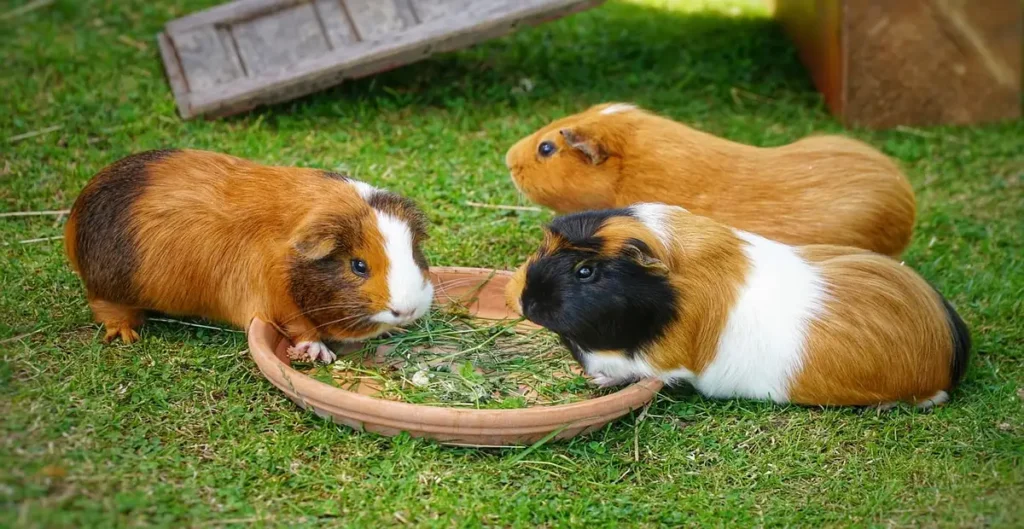
Step-by-Step: Building a DIY Feeding Station
1. DIY Pellet and Hay Station Setup
- Step 1: Use a low-walled plastic or wooden tray to keep food in place.
- Step 2: Divide the tray into sections to separate hay from pellets.
- Step 3: Secure the tray to the side of the cage with Velcro strips or hooks to avoid tipping.
- Step 4: Place a small litter box or disposable tray underneath the hay rack to catch any falling pieces.
Tip: Use a plastic grid or bent wire as a hay rack. Position it high enough to avoid contamination but within reach for easy munching.
2. Building a DIY Water Bottle Holder
Using PVC Pipes:
- Step 1: Cut a PVC pipe to fit the height of the water bottle.
- Step 2: Drill two small holes near the top and bottom of the pipe.
- Step 3: Secure the pipe to the side of the cage using zip ties.
- Step 4: Slide the water bottle into the pipe with the nozzle facing out for easy access.
Using Wire Grids or C&C Panels:
- Step 1: Create a loop with zip ties or wire to hold the bottle in place.
- Step 2: Attach the loop to a grid panel positioned along the cage wall.
- Step 3: Ensure the nozzle pokes through the grid, allowing your pets to drink comfortably.
Tip: Consider using no-drip water bottles to minimize spills and keep bedding dry.
Creative Feeding Station Hacks
- Repurpose Containers: Use old tins, small storage bins, or trays to build compact feeding areas.
- Use Shower Hooks: Attach shower hooks to the top of the cage to hang food baskets or bottles.
- Elevate Hay Racks: Attach hay racks higher in the cage to prevent contamination from bedding.
Maintenance Tips
- Daily Routine: Remove leftover food and check water levels. Clean any wet bedding caused by spills.
- Weekly Deep Cleaning: Wash trays, bottles, and racks with mild soap to avoid mold buildup.
- Monitor Water Bottles: Ensure no-drip bottles function correctly and are free of blockages.
- Rotate Feeding Stations: Occasionally move or change station locations to keep your guinea pigs mentally stimulated.
Benefits of DIY Guinea Pig Feeding Station and Water Holders
- Mess-Free Habitat: Organized feeding reduces food waste and maintains hygiene.
- Tailored Design: You can build a setup that perfectly fits your cage and guinea pig’s behavior.
- Easy Upkeep: Well-secured water bottles prevent spillage, and modular stations simplify cleaning.
- Budget-Friendly: DIY setups allow you to reuse household items and save on expensive commercial options.
FAQs About DIY guinea pig feeding station
Are guinea pig water bottles supposed to drip?
Yes, guinea pig water bottles may drip slightly, especially if they’re newly filled or if there’s a change in temperature. A minor drip is standard, but if it’s constant, the bottle may need adjusting or replacing.
How to give a guinea pig water without a bottle?
If you don’t have a bottle, you can use a small, sturdy water bowl. Ensure it’s shallow and stable so it doesn’t tip over, and keep it clean, as guinea pigs may kick bedding or food into it.
Are water bottles safe for guinea pigs?
Yes, water bottles are safe for guinea pigs and are commonly recommended because they keep the water clean and prevent spills. Make sure the nozzle is appropriate for small animals to avoid any discomfort.
What is the cheapest way to feed guinea pigs?
The most affordable way to feed guinea pigs is by providing them with a mix of hay (like Timothy or Meadow Hay), fresh vegetables, and pellets. Growing fresh greens, such as parsley or lettuce, can also help save costs.
How do you give a guinea pig water without a bottle?
To give water without a bottle, use a shallow, heavy bowl that won’t tip over easily. Change the water daily to ensure it remains fresh and clean.
What should I put on the bottom of my guinea pig cage?
The bottom of a guinea pig cage should have soft, absorbent bedding like paper-based bedding or fleece liners. These materials provide comfort, absorb moisture, and are safe for guinea pigs.
What not to put in a guinea pig cage?
Avoid cedar and pine shavings, as these can release harmful oils. Also, avoid wire floors, plastic items that can be chewed, and small toys that pose a choking hazard.
What fabric is safe for guinea pigs?
Fleece is a safe and popular fabric choice for Guinea pigs. It’s soft, washable, and doesn’t have loose threads that could entangle their tiny feet. Make sure it’s properly cleaned and dried before use.
Finale
Creating a DIY guinea pig feeding station and water bottle holder offers a practical, cost-effective way to organize your guinea pig’s enclosure. With simple materials like PVC pipes, trays, and C&C grids, you can build a personalized setup that reduces waste and keeps your pets well-fed and hydrated. Proper maintenance ensures the system stays hygienic and functional, contributing to your guinea pig’s overall health and happiness.
